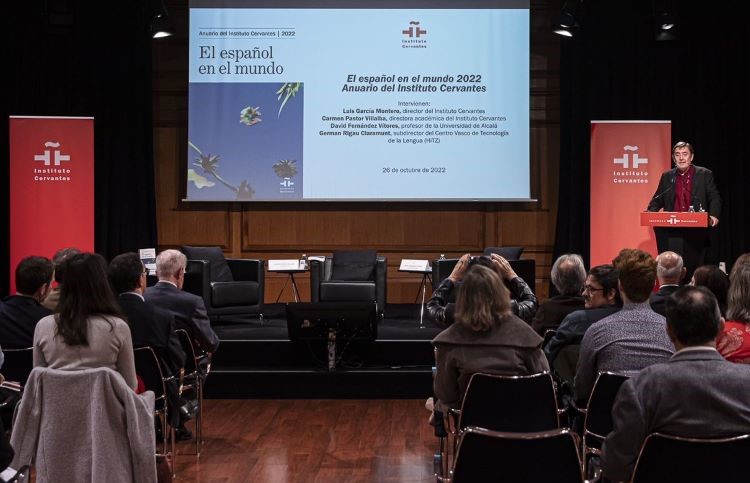The Diplomat
The use and knowledge of Spanish continues to grow around the world and is already close to 500 million native speakers, according to the report El español en el mundo. Anuario del Instituto Cervantes 2022 (Spanish in the world. Instituto Cervantes Yearbook 2022), which was presented last Wednesday at the headquarters of this institution in Madrid.
According to the report, Spanish is already the mother tongue of 496.5 million, almost four more than a year ago, and is close to 600 million speakers (specifically, 595, four more than in 2021) if those with limited competence and students are added. In addition, Spanish continues to be the second mother tongue by number of speakers, after Chinese, and the fourth in the overall count of speakers (including native speakers, limited proficiency and learners), after English, Mandarin Chinese and Hindi.
Nearly 24 million people study Spanish as a foreign language, with a slight decline due to the pandemic and the decline in language tourism, but demand for online self-study is on the rise. The United States continues to be the country with the largest number of Spanish language learners, three times the number of learners of all other languages combined. The document also reveals that the number of Spanish speakers will continue to grow over the next five decades, although their relative weight will decrease progressively between now and the end of the century, and that in 2060, the United States will be the second largest Spanish-speaking country in the world, after Mexico. 27.5% of Americans will be of Hispanic origin.
The director of Instituto Cervantes, Luis García Montero, said at the presentation of this 23rd edition of the report that these are “optimistic data that commit us to work, but not to complacency”. The report, prepared by researcher David Fernández Vítores, was coordinated by the Academic Directorate of the Instituto Cervantes.
The book, with 440 pages and numerous graphs, infographics and illustrations, also details the situation of Spanish in Switzerland, Kenya, the Balkans, the United Arab Emirates and Madagascar. It also addresses the relationship between language and artificial intelligence (AI), both the advantages that AI can bring to language teaching and assessment (collaborative learning, intelligent tutoring, automatic assessment, bullying prevention…) and the risks it entails, such as addictions, disinformation, bias, invasion of privacy or manipulation.
Economic and commercial influence
Regarding the economic and commercial influence of Spanish, the report indicates that Spanish speakers have a combined purchasing power of 9% of the world’s GDP and that in the set of countries where Spanish is the official or majority language, 6.2% of the world’s GDP is generated. “If the Hispanic community in the United States were an independent country, its economy would be the seventh largest in the world, ahead of that of Spain and France,” the study states. In addition, Spanish is the second most relevant language in the language tourism sector.
Regarding its use as an instrument of international communication, the document indicates that Spanish is the third most used language in the United Nations Organization and the fourth in the European Union, that almost 40% of Spanish students are in countries where English is an official or co-official language, and that the study of Spanish is especially intense in the two main English-speaking countries, the United States and the United Kingdom. In addition, Spanish is the most widely used language in American and Ibero-American integration organizations.
The report also devotes a chapter to scientific dissemination in Spanish in which it reveals that Spanish is the language in which most scientific texts are published after English, that 4.4 % of scientific production originates in a Spanish-speaking country and that almost 70 % of scientific documents in the Spanish-speaking world are published in Spain. Seventy-two percent of scientific production in Spanish is distributed among three main subject areas: social sciences (44%), medical sciences (15%) and arts and humanities (13%).
The study also indicates that 7.9 % of Internet users communicate in Spanish, which is the third most used language on the Internet after English and Chinese. More than 70% of the population of Spanish-speaking countries has access to the Internet and Mexico is among the ten countries in the world with the highest number of Internet users. Also, in most digital platforms, such as Facebook, LinkedIn, YouTube, Twitter or Wikipedia, Spanish is the second most used language and U.S. Hispanics prefer to consume and create digital content in Spanish rather than English. In addition, the report notes, in the United States, LinkedIn users are increasingly using Spanish as a professional asset outside the Spanish-speaking world.






